
Comic books, especially in recent years, have been fertile ground for movie adaptations. But what is especially interesting about the way that Hollywood brings the characters from comic books to life is the quick turnaround that happens between the different eras. Because of the potential cash infusion that these kinds of films can make, the studios don’t like having these characters sitting on a shelf for too long. That’s why when one comic book franchise runs out of steam, the the studio will immediately move to reboot it from scratch with a new team and actors in place. That’s why in just a short amount of years we’ve seen so many different iterations of the same super heroes. Now it’s not all uniform with every comic book character. In the last 25 years, we’ve only had the same actor playing the role of Wolverine (Hugh Jackman) in the same time frame that we’ve had three different Spider-Men. And in the era of the MCU, a different tactic has happened where characters end up retiring and passing the mantle of that character over to someone new, much like how it works in the comics. But, for the most part, it’s been very common to see entirely new versions of these comic book characters hit the big screen very quickly after the last ones have run their course. And perhaps no other comic book character has seen the most different movie variations over the course of his history than the caped crusader himself, Batman. The last twenty years alone we’ve seen about four different versions of Batman hit the big screen, with another one coming up soon in the new James Gunn DC Universe being launched. But, as wildly different as all of the Batman adaptations have been on the big screen, it’s his greatest nemesis that has seen an even more dramatic evolution. The Joker, a super villain introduced in 1940 in Batman #1, has become not just one of cinema’s most iconic bad boys, but a role that is coveted by some of the world’s greatest actors, who in a few cases have even been rewarded for bringing this agent of chaos to life. On the page, the Joker has always been a standout villain, being the twisted reflection of everything that Batman is and stands for. But on the big screen, he’s evolved into something even more; a larger than life manifestation of our nightmares. From his humble beginnings to the award winning cinema icon he is today, let’s take a look at the most iconic versions of the Joker ever put on screen
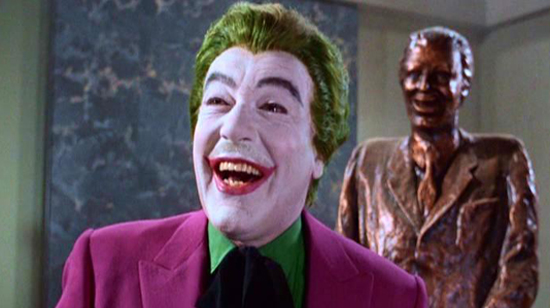
CESAR ROMERO from BATMAN THE MOVIE (1966)
The Batman TV series was very much a product of it’s time, but even still it has earned it’s own place in the overall Batman fandom. The series starring Adam West as the iconic crime-fighter is a far cry from the darker and moodier version of the character that we would get in the decades after. But, there is a lot of joy in watching the show in all of it’s colorful, psychedelic kitsch. Even with all that, it’s still Batman’s story and when Batman’s on screen his rogues’ gallery is sure to follow. Of course, one of the characters that had to make it into the show somehow was his greatest foe, the Joker, and he’s here played by veteran actor Cesar Romero. Ironically, it’s the Joker that translated into the campy style of the show better than all the rest of the characters given that the “clown prince of crime” already had a larger than life flamboyance to him. Romero definitely plays up the clownish side of the character very well, and in particular he may have been he most instrumental in defining the Joker laugh. His multi-part cackle is simultaneously silly and also unsettling, and it’s a laugh that in many ways has been the blueprint for defining all of the Jokers that have come after. This 1966 film adaptation was released into theater in between the first and second season of the wildly successful show. The film pretty much is an extension of the show, using all the same sets and costumes, but expands on the scope of the adventure. Ceasr Romero’s Joker returns, but is also joined by Burgess Meredith’s Penquin, Frank Gorshin’s Riddler, and Lee Merriweather’s Catwoman in a supervillain team-up. Even though Joker is always defined in the comics as Batman’s most dangerous foe, in this movie he’s more or less just along for the ride, with the Penquin acting more as the ringleader. But that’s not to say that he’s wasted in the movie either, as Romero’s Joker still looks like he’s enjoying the fun of being bad. One interesting side note about Romero’s version of the Joker is that Cesar refused to shave off his mustache throughout the entire run of the show, including this movie. The way that the filmmakers got around this was to paint over the mustache to make it blend in with the rest of his clown make-up, only it’s still very noticeable, especially in HD. It’s definitely another weird quirk of the show, but at the same time, it also fits within Cesar Romero’s gonzo take on the character and makes just that much more loonier on both the big and small screen.
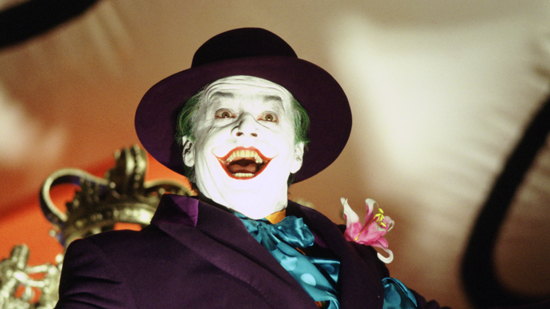
JACK NICHOLSON from BATMAN (1989)
Heading in the exact opposite direction of Cesar Romero’s campy Joker, we get this absolutely terrifying rendition from Jack Nicholson in Tim Burton’s darker re-imagining of Batman. Nicholson had been playing roles for a long time that allowed him to be a bit of jokester, but his performance here is far more Jack Torrence than Randall McMurphy. His origin for the Joker follows closely with the comic books, with him being scared after falling into a vat of chemicals after a row with Batman, a plot point taken directly from Alan Moore’s beloved The Killing Joke story line. But what we get once he transforms fully into The Joker is purely of the imagination of Tim Burton and Jack Nicholson. The permanent smile on his face, created with very effective prosthetic make-up, is definitely unsettling to look at, and it just make the moments when Joker starts breaking out into laughter all the more terrifying. And Jack Nicholson chews into every scene as this character with great delight. Nicholson had long been a fan of the Batman comics, and his involvement in the project was very instrumental in getting it greenlit at Warner Brothers, who were initially hesitant to bring Batman to the big screen. To show his faith in the comic characters and Tim Burton’s vision, Nicholson even accepted a back ended deal that would help to save on his salary during production with the hope that it would pay out in the box office receipts, which of course it did and Jack got handsomely rewarded. There seems to be a bit of the Cesar Romero silliness in Jack’s interpretation of the character, particularly in the moments when he starts dancing, but Jack also knows when to bring the menace out as well. One of the most effectively terrifying moments is when he delivers the line “Wait until they get a load of me.” The combination of a scowl with that sinister smile, all in the glow of moonlight is a very nightmarish image. And Nicholson’s Joker laugh, while not entirely different from his own, is also effectively creepy. For a whole generation of kids, of which I was one, this was our introduction to the Joker; a character that both scared us silly, but also left us captivated. Michael Keaton’s incredible turn as Batman was likewise also iconic, but Jack’s version of the Joker is perhaps the thing that most made Tim Burton’s vision as successful as it was. With him, we were certainly dancing with the devil in the pale moonlight.
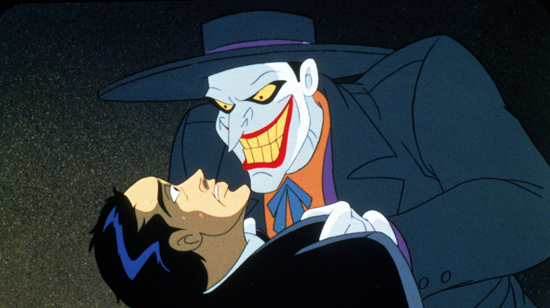
MARK HAMILL from BATMAN: MASK OF THE PHANTASM (1993)
It’s strange to think that one of the greatest versions of the Joker was played by Luke Skywalker. It just goes to show how versatile a performer someone like Mark Hamill can be. After the massive success of Tim Burton’s Batman films, Warner Brothers TV Animation was tasked with creating a Saturday morning cartoon series in the same style and tone of the movies. The team of Creative Director Bruce Timm and Writer Paul Dini went above and beyond just Saturday morning cartoons and made what many consider to be not just one of the greatest animated series of all time, but also one of the best adaptation of Batman in general as well. The success of the show was so massive that Warner Brothers commissioned the same team to make a feature film for theaters to tie in with the show. Mask of the Phantasm features many of the same great traits as the show (it’s style and mature storytelling) but one thing that it certainly couldn’t leave out was the presence of the Joker himself. He’s not the central villain of the movie’s plot (that being the titular Phantasm) but he’s there to make trouble nonetheless and be a thorn in the Batman’s side. Mark Hamill came to the role unexpectedly as a last minute replacement when the original actor (Tim Curry) dropped out. Hamill immediately clicked in the character and has played him off and on for decades after in various formats, including this film. While Bruce Timm’s design of the character is remarkable enough, it’s Hamill’s vocal performance that truly sells the character. He’s often described his Joker voice as being a mix of The Invisible Man and the Blue Meanie from Yellow Submarine (1968). His voice is both effectively cartoonish in the right way but underlined with an unsettling bit of shrillness too. And of course the enormous cackle of a laugh he gives is chilling, and in my opinion never topped. To be honest, whenever I read a Batman comic, it’s Mark Hamill’s voice I hear as the Joker, which is a testament to how well he has ingrained his version into our memories. Hamill has put his time as Joker to rest in tribute to the memory of the late great Kevin Conroy who voiced Batman alongside Mark Hamill’s Joker for all these years. In Hamill’s own words, “Without Batman, crime has no punchline.”
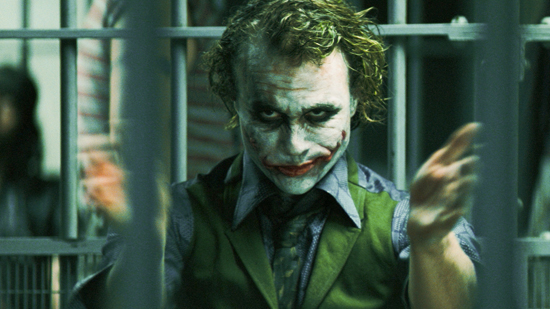
HEATH LEDGER from THE DARK KNIGHT (2008)
Perhaps the most iconic and most celebrated version of the Joker we have ever seen on the big screen. And the most remarkable thing about it is that no one outside of the film’s production ever thought it would work. When it was announced that Heath Ledger would be taking on the role of the Joker in Christopher Nolan’s widely anticipated Batman sequel, it turned quite a few heads. Up to that point, Ledger was most known for his Oscar nominated role as a deeply closeted gay cowboy in Brokeback Mountain (2005). No one other than Christopher Nolan could see him embodying the role and it was leading a lot of fans to worry that he was being miscast. And then, the first teaser for the film was released. Played exclusively in IMAX theaters, audiences were treated to the introduction bank heist scene played in full as a teaser, and it gave us our first look at what Ledger would look like as the character. And after that, no one was doubting the casting choice any more. Ledger looked and sounded unrecognizable as the Joker, and his horrific looking scarred face with smeared on clown make-up made him look far more disturbing than any Joker we had ever scene up to this point. Further marketing really put the spotlight on Ledger’s Joker and anticipation for the movie really began to pick up. Unfortunately, Heath would not live to see the laurels given to his groundbreaking performance. He sadly died from an accidental overdose mere months before the movie released into theaters. As tragic as his untimely death was, we thankfully were blessed to have had one final masterful and complete performance with him in this film. And his Joker is iconic in every conceivable way. He’s terrifying, but also manages to deliver a genuine laugh throughout the movie. The best thing about his character here is also the fact that he’s left as a bit of an enigma; a man with no past or an identity, except to only be the ying to Batman’s yang And as over the top as he’s going with the character, it still fits within Nolan’s more grounded vision of the Batman mythos. There are numerous moments where his brilliant performance shines, but perhaps the most memorable is the interrogation scene where he’s confronted by Christian Bale’s Batman in a literally explosive battle of wills. Ledger’s performance proved to be strong enough to earn him a posthumous Oscar win for Best Supporting Actor, and his Joker remains a high water mark to this day. We all doubted him, but in the end he proved us all wrong.
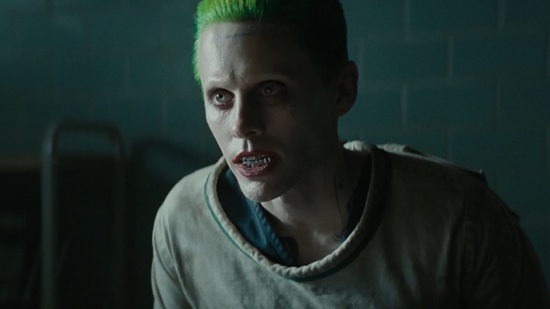
JARED LETO from SUICIDE SQUAD (2016)
Now, to go from the greatest cinematic Joker to easily the worst. It was hard to find a way to bring the character of the Joker back to the big screen after Heath Ledger’s iconic performance. But with the beginning of the now defunct DCEU (also known as the Snyderverse) which gave us yet another version of Batman, played by Ben Affleck, it was only a matter of time before we would get a new Joker. But instead of introducing the Joker in a standard Batman story-line, the DCEU instead had him make his first appearance as a side character in this Suicide Squad adaptation. Now, why here? It’s because one of the Suicide Sqaud members is Harley Quinn, Joker’s frequent accomplice and girlfriend; a character who by the way made her debut in the animated series which featured Mark Hamill’s Joker. Margot Robbie did a fine job bringing Harley to life on the big screen, but the same can’t be said about Jared Leto’s Joker. Leto made some weird choices with the character. Instead of playing up the flamboyance of previous versions of the character, Leto’s Joker is just a demented lunatic who barely talks above a whisper most of the time. I get that this Suicide Squad’s idea of the Joker was supposed to have him be more punk rap gangster than the carnival-esque clown he was before. But it just feels weird and try hard. It just makes the Joker feel less intimidating when we see him covered in tattoos and wearing a grill on his teeth. Even his Joker laugh feels weak, like he’s struggling to get it out and it just comes through as a whimper. Since Cesar Romero, every actor playing the Joker has put gusto into their laugh; even Heath Ledger with his more sinister version, which oddly feels like it was inspired a bit by Romero’s original multi-part laugh. The one saving grace about this version of the Joker is that he’s barely in the film at all. He’s only there to give Harley Quinn motivation in the plot, and let’s face it, she is far more the star of the show here. Jared Leto would briefly turn up again as the Joker in the infamous Snyder Cut of Justice League, added as part of the re-shoots to bring more definition to Zack Snyder’s original vision. While he’s not as garish looking playing the part in that scene, he’s also just as equally worthless to the plot as well, and given that the DCEU died a quick death thereafter, it’s probably for the best that we’ll never see this version of the character ever again.
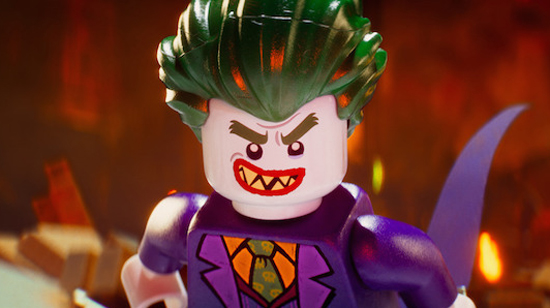
ZACH GALIFIANAKIS from THE LEGO BATMAN MOVIE (2017)
The surprise success of The Lego Movie (2014) was largely due to it’s groundbreaking animation, what a lot of fans also loved about the movie was the cheeky and imaginative use of all the different IP’s that the Lego brand has been able to cobble together. The mix and match of characters from across pop culture in Lego form offered plenty of entertainment, but one of the big standouts in the movie was Lego Batman. The hilarious take on the character proved to be so popular that it convinced Lego and Warner Brothers to green-light a spin off film just centered on the Lego Batman character. And naturally, if there is going to be a Lego Batman movie, there would have to be a Lego Joker there too. Lego Joker gets to make his screen debut in this movie, and he manages to be a surprisingly effective antagonist for this story. The brilliant part of how they portray the Batman/Joker dynamic in this story is by making them like a toxic romantic couple, with each one only finding gratification through the friction of their rivalry. Zach Galifinakis plays the character closer to his own stand-up comic persona, which helps to differentiate him from other versions of the character, and his performance balances off of Will Arnett’s eccentric and caricatured Batman quite well. The visual of Lego Joker is also very cool to look at, with the animators accentuating his Joker grin with razor sharp, shark-like teeth. The plot involves Joker getting back at Batman, out of a need for attention, by unleashing all of the worst villains out of the Phantom Zone, which is another way that this Lego franchise is able to throw in a bunch of other characters from different IP’s; or at least from all the ones that Warner Brothers had the licenses to. But even in a movie that includes the likes of Voldemort, Sauron, and Godzilla, it’s the Joker that still stands out as the most memorable villain in the movie, and that mainly is because the movie manages to still bring all the best qualities of the character. He is definitively an agent of chaos and this includes bringing about a chaotic show of force with every embodiment of evil together, all simply because he didn’t feel adequately in opposition with Batman. He’s also just a fun take on the character that feels right at home in brick built world.
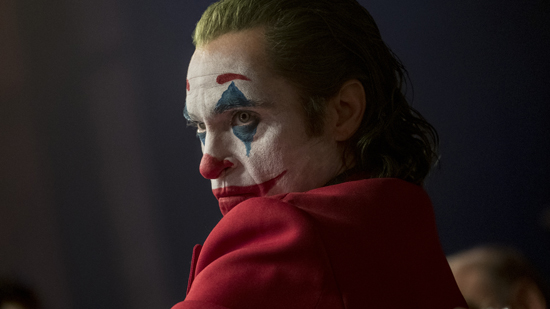
JOAQUIN PHOENIX from JOKER (2019) and JOKER: FOLIE A DEUX (2024)
If there was ever a portrayal of the Joker that comes closest to matching the visceral, terrifying version that Heath Ledger brought to the screen, it’s this version portrayed by Joaquin Phoenix. The first Joker movie was controversial for many reasons, mainly with it’s attempt to humanize such fundamentally diabolical character. Too many people misinterpreted the movie as a validation for the persona of the Joker, that it was giving sympathy towards the toxic, incel type of masculinity that the Joker often represents, rather than see what the movie was really about which was a critique about how social and economic disparity are often to blame for creating monsters like the Joker. But, what most people who either love or hate the movie will still agree on is that Joaquin Phoenix’s performance is undeniably great. In telling the backstory about how one man became the Joker (a first on the big screen), Joaquin perfectly embodies this broken down man who descends further and further down the rabbit hole of his own demented mind; externalizing all of his anxiety and mistrust of the world into this Joker persona, which unfortunately boils over into murderous rage. The unsettling message of the movie is that monsters like the Joker start to infect societies of people desperate to find larger than life symbols that will help to galvanize their own darker tendencies. Unfortunately there is real world evidence of the Joker being a potent symbol for violent people, as the shooting in the movie theater in Aurora, Colorado tragically showed us. There’s nuance to the portrayal of Joker in the movie that gets lost in all the controversy around this film, and that’s largely thanks to Phoenix’s fearlessness in the role. For his efforts, Phoenix won an Oscar for Best Actor, making him the second performer to earn an Academy Award for playing this character after Ledger. Unfortunately, the awards success and stellar box office convinced Warner Brothers to green-light an unnecessary sequel. It worked so much better for the story of Arthur Fleck becoming the Joker to be just a one off, but director Todd Phillips still moved forward anyway, and the sequel Joker: Folie a Deux became one of the more baffling misfires of a sequel we’ve seen in recent memory. Sadly the movie undoes all of the effective character building that was done in the original film, and even leaves us with an unsatisfying rug pull in the end, showing that this Joker was not in fact the same Joker that would one day face off with Batman. And it’s pointlessly made into a musical too. Phoenix’s performance is still the most worthwhile aspect of both movies, but certainly used much better in the first film.
It is fascinating to see a character like the Joker go from comic book heavy to a movie role capable of winning it’s actor an Academy Award. And not just one, but twice. That’s the incredible effect that this character has had in our pop culture. That iconic mix of white skin, green hair and a purple suit has made the Joker stand out, especially in contrast with the Dark Knight himself. Whether he’s played more light-heartedly by the likes of Cesar Romero or with terrifying intensity by Heath Ledger, he’s a character that demands our attention. And each generation seems to find new ways to bring this character to life and keep him relevant to the times. For me, I grew up with the mix of fear and funny found in Jack Nicholson’s iconic performance. And like I stated before, Mark Hamill’s vocal performance as the Joker has become the voice that I hear whenever I read a Batman comic. There really has only been one Joker performance that has fallen flat for me, which is Jared Leto’s weird take on the character. Leto’s a talented actor, but his performance just feels at odds with what the character has always represented, and worst of all, his performance is neither scary or funny. Thankfully, Joaquin Phoenix managed to find that right mix, while at the same time creating a fascinating portrait of a man unraveling due to his demented belief that the world has been unfair to him. Looking at every version of the character, the one that certainly transcends them all is Heath Ledger’s portrayal in The Dark Knight. His performance in that movie not only stands as perhaps the best ever given in a comic book movie, but one of the best ever in cinematic history. In that performance, you do see the “agent of chaos” unleashed, and it’s one of the most profound portraits of evil ever put into a film. Where Joker goes from here will be interesting to see. There was a tease for the character in Matt Reeve’s The Batman (2022), played by Barry Keoghan behind a cell door. Whether anyone can reach the heights that Ledger and Joaquin Phoenix reached remains to be seen, but the opportunity has certainly become something that great actors now actively pursue. The one thing we know for sure is that when there is still a Batman in the world, there will likewise always be a Joker not far behind, hanging around like the bad joke that he is.